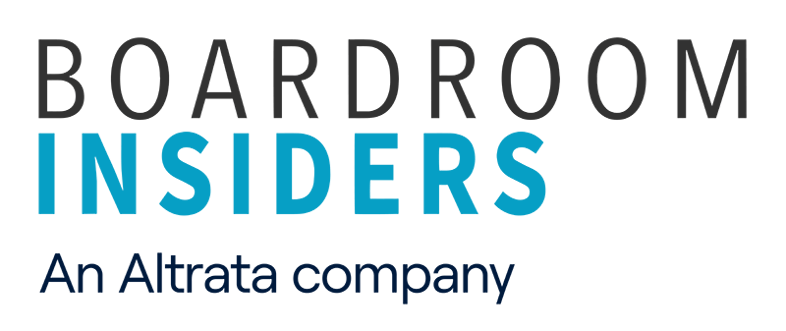
If your aim is to increase sales of your tech solutions to CIOs and CTOs, your sales force must know how your products and services will meet your customers’ end goals. Understanding how they and their bosses measure IT success is critical.
While IT is certainly central to adding value to an organization, every organization has a different way of defining and measuring that value. Sometimes IT is measured using company-wide metrics. Other times, it sets its own goals and metrics. We’ve also seen organizations use a hybrid approach in which IT has its own metrics–but they align with and support broader corporate goals.
According to a recent CIO Journal article, some CIOs are deploying a new generation of metrics that put a monetary value on the contributions of IT. But IT provides value in many so many contexts: operations, productivity, business performance, innovation, growth, and security. Not surprisingly, the way tech executives measure the value that IT delivers varies greatly. Even seasoned CIOs can be challenged when it comes to measurement. Back in 2012 Annabelle Bexiga of American International Group acknowledged that, “When technologies are in their infancy, it is sometimes difficult to measure exactly what success looks like. The key is identifying what your customers are going to benefit from the most."
We recently looked at what some of the hundreds of CIOs we follow had to say on the topic of measuring success when it comes to IT projects and investments.
Are we supporting the overall business strategy?
When Jim Fowler was the CIO of GE Capital (he was recently named GE’s corporate CIO), he measured IT performance based on the team’s ability to help grow GE Capital’s asset base. “We produce new technology services that support more loans and leases,” Fowler said at the time, adding that automated tools have driven $400 million into GE Capital over the past two years.
At Celgene Corporation, the overall business strategy incorporates the IT strategy and roadmap as a core component. SVP and CIO Richard Williams said, “This creates visibility and priority of IT programs and investments, and ensures that our strategies, programs and projects align fully to our overall business strategy. This level of transparency and alignment ensures that our business colleagues understand the drivers and value behind everything we in IT do—from infrastructure investments to strategic initiatives in cloud, mobility or informatics.” He added that within his leadership team, “We look at everything through the lens of our business and we measure our success on whether we delivered on a business objective, not on simply delivering the technology.”
Manjit Singh of Clorox Company also focuses on aligning with business objectives—especially when it comes to big data. According to Singh, "We’re challenged in how to get insight out of the data—what questions to ask and how to use the data to predict results in the business." For Singh, the answer is to always focus on enabling strategic business objectives, to break things down into discrete tasks with measurable outcomes. When you start from the business use case, Singh added, infrastructure questions become much easier to answer.
Are we more than order takers?
CIOs not only have to demonstrate IT’s value to the business, they also have to know when to push back on—and even say no to—commercial leaders. For instance, if a business unit is seeking additional capability in an ERP system, IT will check on how much of the current capability is being used. It might discover that the business unit is only using 60 percent of its capability but is asking for $2 million in enhancements, Polit said. That information is then shared with the CEO, and "once you get that out, the answer is immediate: We're not going to do that," he said. To help monitor utilization, the group creates a standard and metrics and then presents that data on a scorecard. “You have to push back,” Polit said, “in order to make the right decisions.”
Are we making our peers more productive?
Brook Mickey Colangelo of Houghton Mifflin Harcourt is a runner whose philosophy is, “If we do not measure ourselves we can’t improve.” Like his running statistics, he expects IT to have a similar health scorecard. “Most of the metrics we have focused on have been productivity metrics. We want to put into action projects and tasks that will make our colleagues more productive. Our colleagues mentioned that there were too many log-in prompts for their computers. We quickly streamlined that, and have saved 270 hours of productive time for our employees and contractors in the process.” He explained that they also measure against the stability and up-time of key platforms. “Internally, we measure the success of our IT initiatives by tracking downtime, the efficiency of our systems, ease of collaboration, and ultimately employee engagement and productivity.”
Are we keeping our company safe?
Clearly no form of data analytics can predict with precision upcoming cyberattacks, but at Bank of America, Catherine Pombier Bessant measures progress in specific security areas to better position the bank to stop or respond to problems. BofA has developed a set of metrics to improve its processes for cyberattack prevention, detection, and mitigation, applying analytics to an ever-moving target. Bessant said that the bank’s cybersecurity metrics include one for tracking how frequently system scans are performed and another for counting the potential problems that are found during those scans. And they study correlations among those metrics, as well as the “dwell time” of problematic code. But, most critical, she said, is the focus on the bank’s record for finding and keeping cybersecurity staff. “There’s a war for talent every day.”
Is the way we measure standardized—and repeatable?
With so many possible ways to measure IT success, the challenge then becomes this: How does a CIO standardize and sustain a measurement approach so that improvements can be tracked over time—and refinements can be made as needed? A few of the CIOs we follow have spoken about how they have achieved a systematized approach to measuring IT success.
At Health Care Service Corporation, SVP and CIO Steve Betts has implemented a dashboard that covers several themes of change regarding the operating model. They include strategy, delivery and getting and end-to-end view of all project delivery happening around a business line or across an enterprise business service, resource management, operational, and financial.
Robert Carter, FedEx Corporations’ EVP and CIO, says that the company is pretty fanatical about the Service Quality Index, or SQI. “Every aspect of our business is metric based and how effectively and efficiently do we deliver this service that we are about. So we have SQI Indexes against all of the IT systems and capabilities in ways that let us measure whether or not these things are available for our customers and available for our business,” he explained. Carter also emphasized the importance of cost-effectiveness in delivering technologies, as well as resiliency. “It is linked to SQI, but it is a bit of a different thing. How flexibly can you run these applications in multiple locations and provide better response when you’re running very unique footprints that go on and on as far as the eye can see..”
Finally, there’s the Danaher Business System developed by Danaher Corporation. Based on the principles of lean manufacturing, the DBS initiative was spawned back in the mid-1980s. According to the company, “DBS drives every aspect of our culture and performance. We use DBS to guide what we do, measure how well we execute, and create options for doing even better—including improving DBS itself...Over time, DBS has evolved from a collection of manufacturing improvement tools into a philosophy, set of values, and series of management processes that collectively define who we are and how we do what we do...We believe our DBS tools are unique and a clear differentiator for our business."
Not every CIO uses the same success metrics—so make sure you do your homework on each individual executive. Boardroom Insiders is a leading source for insight about executive decision makers and their company strategies, initiatives and challenges--just the type of information you need to glean the insights you need to have successful conversations with CIOs. Our customers use our in-depth executive profiles to educate themselves about the issues important to them and win more business with their key accounts.
Check out our free sample profiles to learn more.







Share Your Thoughts